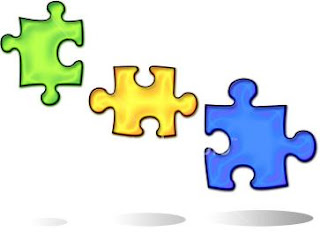Hi Everyone
TedGlobal is over. Following are three main talks that I am eagerly waiting to see:
1) DAN Pink: Looking forward for the talk by Dan pink wherein he demonstrates that giving incentives may not necessarily lead to better & quick performance as the nature of problems been faced by employees have changed over the years. Presently people work on problems which are abstract, ambiguous & which have never been solved before. In these kind of problems there can be a possibility of multiple results so it his hard to focus on one particular goal. Can we use Design tools & methods & combine it with Business logic to create something new & beneficial.

Waiting for his talk .
2) The second talk that I am l ooking forward is from Janine Benyus. Janine Benyus works in the field of bio-mimicry & by looking at the natural world she designs things elegantly. One of the key takeaway from her talk will be to infuse cross-disciplinary learning. For eg: She mentions JR West, makers of high-speed bullet trains, found that when they entered tunnels the train built up pressure and created the equivalent of a sonic boom. Engineers looked at how the kingfisher entered the water and redesigned the train. It solved the problem of the tunnel noise, made the train 10% faster and 15% more efficient.
ooking forward is from Janine Benyus. Janine Benyus works in the field of bio-mimicry & by looking at the natural world she designs things elegantly. One of the key takeaway from her talk will be to infuse cross-disciplinary learning. For eg: She mentions JR West, makers of high-speed bullet trains, found that when they entered tunnels the train built up pressure and created the equivalent of a sonic boom. Engineers looked at how the kingfisher entered the water and redesigned the train. It solved the problem of the tunnel noise, made the train 10% faster and 15% more efficient.
How we can solve present problems using this cross disciplinary learning. What we can Observe, learn & implement from our surroundings to solve our problems like developing 100% eco friendly plastic, etc. Looking forward for her talk.

3) The third talk that I am waiting for is by Tim Brown where he asks "What happens if you move from design to design-making?". He talks about how the field of design has changed over the years with designers shifted from broader view to narrower view & focused on aesthetics. He mentions that the field of design is once again changing by focusing on human centricity. Designers are now shifting from their sole focus on ergonomics to focusing on human needs & designing products/services/businesses around them. He also points out the importance of prototyping.

Looking forward for this talk.
Incidentally, before going to his talk, Tim had asked people via twitter (#CBDQ) the kinds of questions design thinking might be used to tackle.
I also participated, Here are my list of questions that I sent which I think design thinking might be used to tackle.
1. To measure the carbon footprint
2. To develop solutions that instead of depleting resources, actually create them
3. How to ensure that everyone votes in elections (100% voter turnout) anywhere specially countries like India.
4. Providing MENTAL Insurance to people with depression.
5. When will we get rid of wires & be wireless (remove TV, radio, electrical appliances electric cords)...have power trans wirelessly
6. How can design thinking used to replace plastic (bottles, bags, etc) with viable & sustainable material.
7. How can DT be used so that everyone wants to be fit resulting to healthy nation.
8. Can one be given fitness points for working out & can they redeem it similar to carbon credit in fitness centers, etc.
9. Can DT be used to know what Infants want ?
10. How can we enable people from different disciplines understand each others perspective clearly.
11. How to assess/measure one's skills
12. Ensuring everybody(who is req to pay) pays taxes
13. How to connect B2B together to create a network & helping each other
14. How to help executives multitask
15. How to make school more fun- in a way that students enjoy being there
16. How to make a paint so that no bills/spray paint can stick on them & damage city walls
17. How one can learn foreign language without much effort/ how people from diff countries communicate quickly & efficiently.
18. How to induce people to use eco friendly bags at the same time make business sense
19. Helping traffic police reduce traffic congestions & streamline traffic
20. Helping anyone to understand how to operate a product/service very easily
21. Providing a simulated & interactive experience of travel, food, language & culture to travelers before visiting a place
22. Helping companies, individuals, etc to reframe their problems & provide multiple possibilities
23. Helping neighbors to start interaction with each other
24. How to engaging people who have retired to create value
25. Helping youngsters find & create their unique identity
26. In what way experience can be STORED shared
27. How can other employees rate their peers Anonymously
28. How can we change the mindset of people in companies
29. For developing solutions so that I dont have to shave for weeks
30. For generating conversations among strangers
31. To connect seekers with offerers of service, products, education. Etc
32. To keep a track of our nutrition intake.
Looking forward for these talks
Thanks
Neeraj
Sources: http://blog.ted.com/2009/07/tim_brown_at_te.php
http://www.guardian.co.uk/media/pda/2009/jul/23/nature-technology-energy-buildingmaterials
http://blog.ted.com/2009/07/dan_pink_at_ted.php











